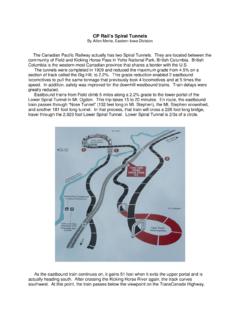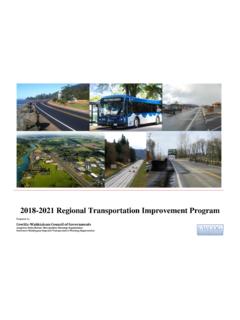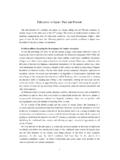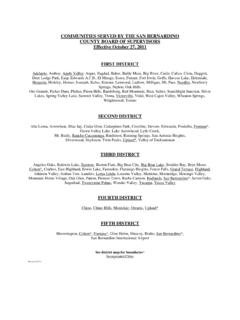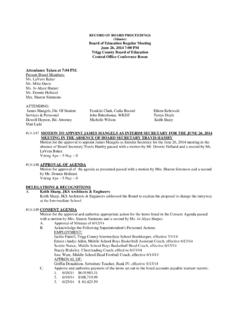Transcription of CONVERTING A LAYOUT TO DCC - MCoR Index Webpage
1 CONVERTING A LAYOUT TO DCC By Robert Perkins This is the first in a series of articles about the conversion of an existing HO scale LAYOUT to DCC control. My C&NW LAYOUT was started in 1991. This medium sized LAYOUT has gone through several modifications over the years. The LAYOUT currently occupies a 15 by 17 foot space in the corner of my basement. The LAYOUT was originally designed for DC block control. The main line, staging yard, and a small yard are currently controller by a large central control panel. The control panel is fed by two DC throttles. The control panel contains all of the block control switches and turnout controls. The main throttle controls 7 block on the main line, 7 blocks in the staging yard, and the reversing leg of the wye. The yard throttle controls 16 blocks in the yard. In addition, the drill track and the arrival/departure track are set up for control by either throttle. A branch line was added about two years ago.
2 The branch line has its own control panel and one additional throttle. The LAYOUT has now expanded to the point where I am no longer able to stand in one spot and control every thing. Therefore, I have decided to upgrade the control system to 21st century standards. One of the great advantages of DCC is walk-around control. DCC can also easily accommodate multiple operators. I also want to take advantage of the lighting and sound effects that are possible with DCC. This LAYOUT will be converted to a NCE DCC system. I especially like the Pro Cab throttles with the easy to use buttons and the large LCD readout. Also my Pro Cab throttle is compatible with the DCC system that is in use at my club s LAYOUT . The goal is to use one 5 Amp booster that will supply three power districts. Some preparation LAYOUT preparation work is necessary before the central control panel is removed. The first step in the LAYOUT conversion process is to remove all of the turnout controls from the central control panel.
3 Many of the turnouts that are within easy reach have been converted to Caboose Industries ground throws. However some turnouts are located at points that are either hard to reach, or are in locations where I preferred not to reach into a scene. These turnouts are controlled by an assortment of Circuitron Tortoise and Atlas twin coil switch machines. Small turnout control panels were fabricated and mounted on the fascia near the affected turnouts. A small shelf made from a 1 by 4 was attached to the bottom edge of the fascia to prevent operators from bumping or leaning against the turnout controls. A separate power supply is in place for the turnout controls. The Atlas twin coil machines use +24 VDC that is routed through a diode matrix. The tortoise switch machines are powered by +12 VDC. The next article in the series will cover the removal of the central control panel and the installation of the DCC booster, and the circuit breakers, and the programming track.
4

